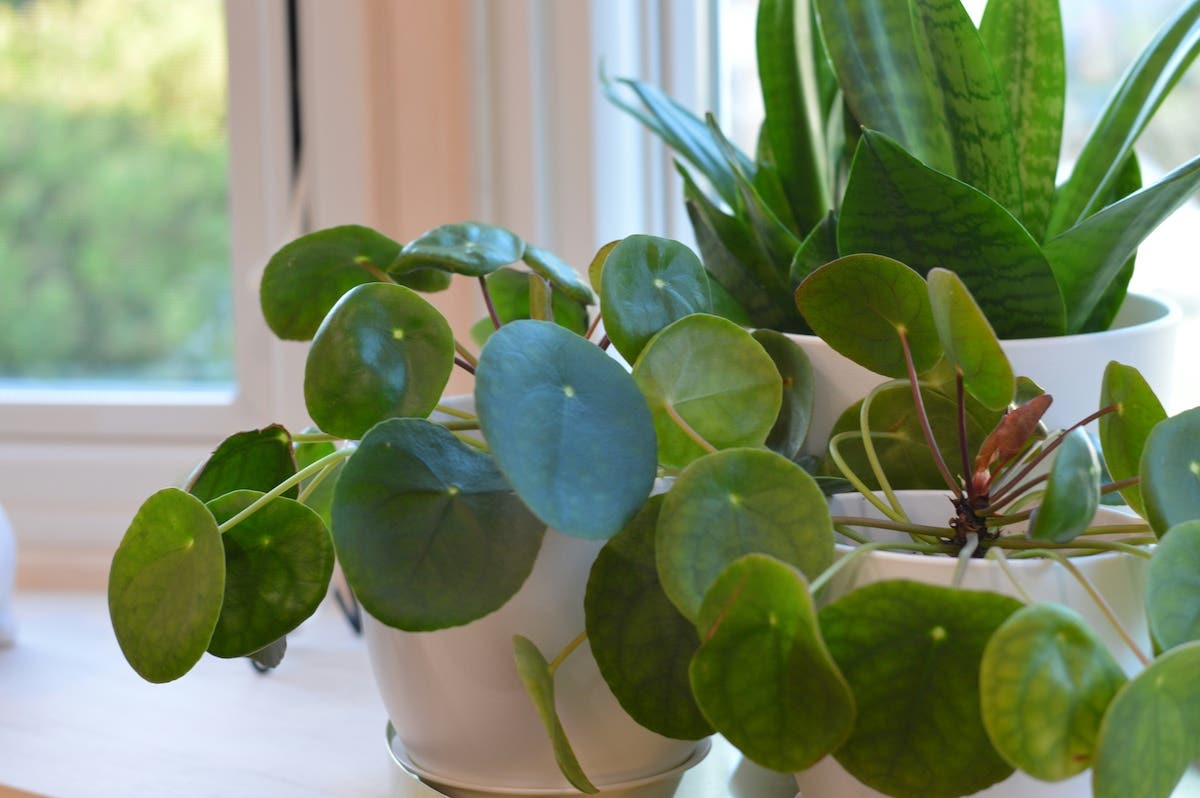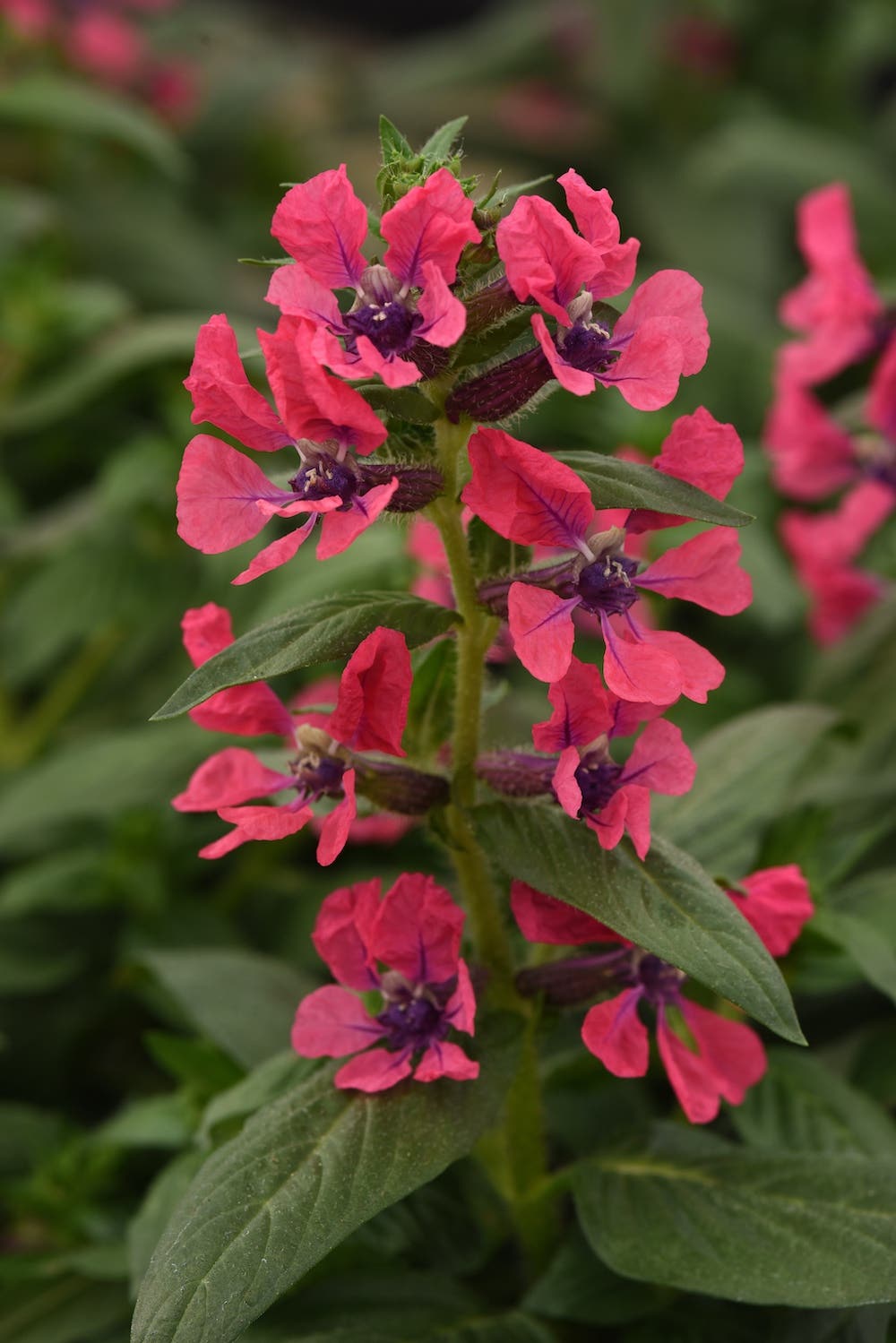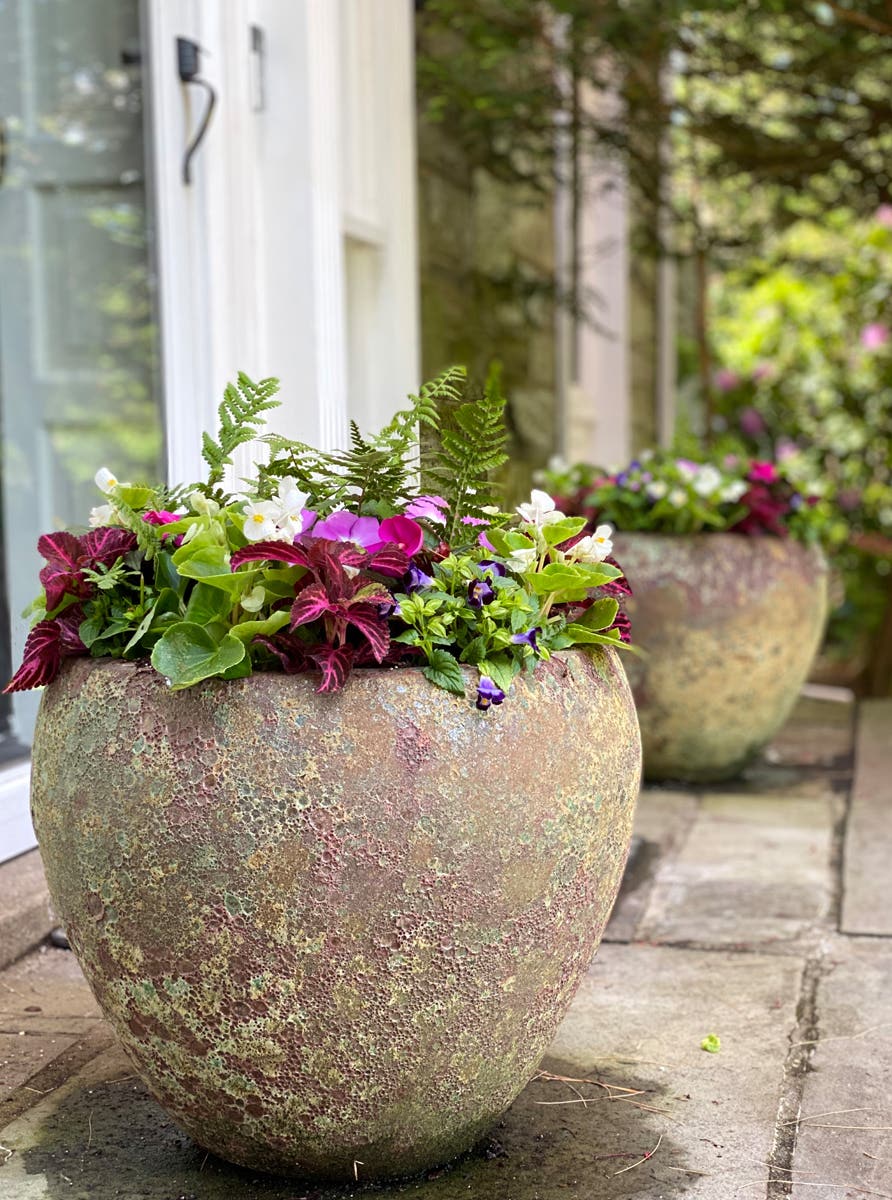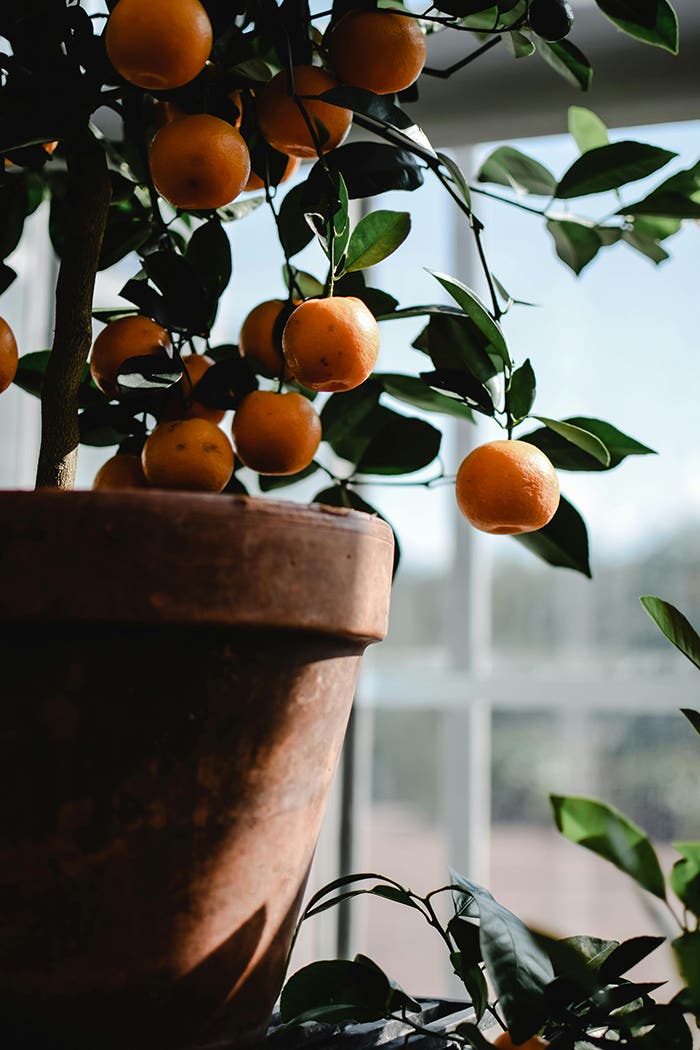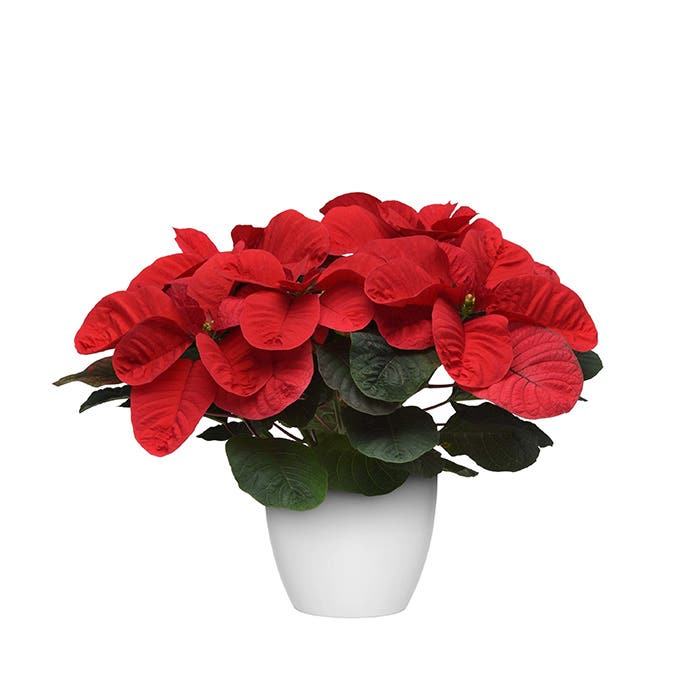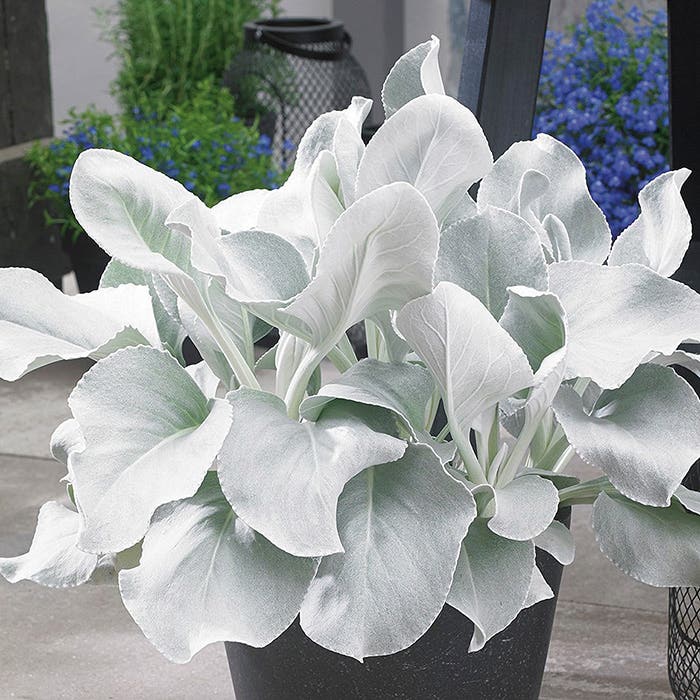There’s no denying the recent surge in interest in tending houseplants. This has brought a great benefit: many more choices of plants, aligning the shopping experience with that of the outdoor garden. Where once we were limited to Boston fern, Christmas cactus and a few varieties of pothos, now interesting, distinctive cultivars abound, from branded collections that gather their own following.
Avid gardeners might be interested to know that in 2022 the well-known grower Monrovia is “branching in” with a series of large houseplants. Chosen for their striking leaves, these cultivars of familiar plants like rubber tree and philodendron are being offered in the company’s familiar green one-gallon containers, often with multiple specimens potted together for a full look.
1. Variegated council tree
(Ficus altissima ‘Variegata’)
A cousin to the fiddleleaf fig (Ficus lyrata), F. altissima shows a similar upright growth habit, but it’s not as temperamental, and its large leaves are simply oval in shape. This species hails from Southeast Asia, where mature specimens stand close to 100 feet tall, with buttressed roots bracing their thick trunks. In the home, this ficus can be expected to grow six feet tall. The cultivar ‘Variegata’ bears two-tone green leaves with prominent pale veining.
Optimal light: Bright light; accepts some gentle direct sun in the morning hours.
Growing notes: Allow the top few inches of the potting mix to dry completely before watering a council tree, then drench it. Remove any excess water that collects in the pot’s saucer. Yellowing or dropped leaves indicate that this plant is receiving too much water. The stiff, broad foliage can collect dust; simply wipe it off with a damp cloth at watering time.
2. Dwarf swiss cheese plant
(Monstera deliciosa ‘Tauerii’
)
Swiss cheese plant should be easily recognized by its namesake leaves, but in fact these variations can take years to develop, and in the meantime the leaves look quite plain (though sized to impress). The cultivar ‘Tauerii’ differs in that it bears holey leaves earlier in life. It’s also a dwarf—compared to the species! It can still grow to six feet tall.
Optimal light: Bright, indirect light, with some direct sun accepted.
Growing notes: ‘Tauerii’ monstera needs good drainage and it benefits from the potting mix drying. Encourage more compact growth by giving it bright light throughout the day and even a few hours in the sun. Otherwise, this plant can become ungainly. To keep it upright as it grows larger, loosely tie some petioles (leaf stems) to a stake or trellis placed within the pot. It may send out aerial roots; in nature these would attach to neighboring tree trunks, but in the home they can be tied to the plant’s support and inserted into the potting mix once they reach it.
3. ‘Tresor’ West Indies fig
(Ficus americana ‘Tresor’
)
Another offering from the ficus world, this is hailed as an easier alternative to the fiddleleaf, with a more tree-like habit than the rubber plant (F. elastica). The stem is strikingly pale, providing great contrast to the wine-colored petioles and midribs that extend through dark green, paddlelike leaves. This species is native to the Caribbean and much of Central and South America, and it can be seen as a street tree in southern Florida.
Optimal light: Bright, indirect. Tolerates low light.
Growing notes: Care of ‘Tresor’ is similar to that of F. altissima and the rubber plant. Be sure to let the soil dry before watering it again. This ficus can grow more quickly than other types and may benefit from staking. Give it bright, indirect light, but keep it where it won’t be subjected to cold drafts. This ficus can tolerate low light, too.
4. ‘Birkin’ philodendron
(Philodendron erubescens ‘Birkin’
)
Here’s quite a different animal than the familiar heartleaf philodendron (P. hederaceum), a trailing plant often confused with pothos (Epipremnum aureum). Philodendron erubescens is unmistakable, thanks to its upright habit and large leaves that unfurl one after the other from a central stem or two. Thin, pale green stripes cover the leaves of ‘Birkin’, one of several interesting cultivars. It can reach three feet tall, but very slowly—something to keep in mind when choosing between four-inch and gallon pots on the greenhouse bench.
Optimal light: Bright and indirect, with some morning sun.
Growing notes: Use a loose potting mix that affords quick drainage, and provide consistent moisture for the best growth. ‘Birkin’ is touted as a self-heading philodendron; while others of its ilk can become awkward without a support, this cultivar holds itself upright. That’s because its leaves occur so close together. Place it in bright, indirect light with some morning sun.
5. ‘Abidjan’ rubber plant
(Ficus elastica ‘Abidjan’)
The rubber plant has a long history as a houseplant, thanks to its tolerance of low light and dry air and its general reluctance to die. That said, kind treatment elevates the rubber tree from survivor to stunner, especially with special cultivars such as the pink-and-cream-marked ‘Tineke’ or dramatic ‘Abidijan’, which offers compact growth and near-black leaves that emerge from bright red sheaths at the stem tops.
Optimal light: Bright, indirect light; will tolerate low light, but growth will lag.
Growing notes: Without bright light and attention, the rubber plant can seem frozen in time, or if it does develop, it becomes stretched and spindly. To keep it dense and growing, place it closer to a window. Regularly wipe dust off the broad, smooth leaves to maintain their luster and their ability to photosynthesize. Allow the potting mix to dry between waterings. If a well-tended rubber plant ceases to grow, check that it is rootbound; if yes, move it into a pot several inches larger and it will likely respond with fresh leaves. Note: Rubber plants exude a potentially irritating sap if cut.
All images courtesy of Monrovia


